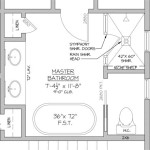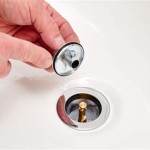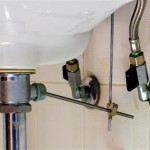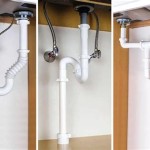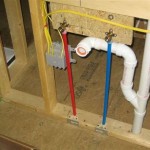How To Install A New Bathroom Fan With Light And Heater
Installing a new bathroom fan with integrated light and heater offers improved ventilation, lighting, and supplemental warmth. This project requires basic electrical and carpentry skills. Before beginning, always ensure the power to the bathroom circuit is turned off at the main electrical panel.
Planning and Preparation: Careful planning is essential. Determine the necessary fan capacity based on the bathroom size. Local building codes dictate minimum airflow requirements typically expressed in cubic feet per minute (CFM). Measure the existing fan housing dimensions to ensure the new unit fits the existing opening. If replacing an older unit, verify the wiring and circuit capacity can handle the new fan’s requirements. Acquiring necessary permits may also be required.
Gathering Materials and Tools: Assemble the necessary materials and tools before starting the installation. This includes the new fan/light/heater unit, flexible ductwork (if needed), electrical wire (if replacing existing wiring or extending), wire connectors, electrical tape, screws, caulk, safety glasses, gloves, a voltage tester, a stud finder, a drill with appropriate bits, a reciprocating saw (if enlarging the ceiling opening), and a ladder.
Accessing the Existing Fan Housing: Access the existing fan housing from the attic or from below the ceiling. Ensure safe and stable footing when working from a ladder in the bathroom. Carefully remove the existing fan grille cover. Use the voltage tester to confirm the power is off.
Disconnecting the Existing Fan: Document how the existing fan is wired, taking photos if necessary. Carefully disconnect the wiring from the existing fan unit, labeling each wire for easier reconnection later. Remove the screws securing the fan housing to the joists or ceiling framing. Lower the fan housing carefully.
Installing the New Fan Housing: If the new fan housing is a different size than the existing one, adjustments to the ceiling opening may be necessary. Enlarge the opening with a reciprocating saw if needed, taking care not to damage any surrounding wiring or plumbing. Position the new fan housing in the opening and secure it to the joists or ceiling framing using appropriate screws. Ensure the housing is level and flush with the ceiling.
Connecting the Ductwork: Connect the flexible ductwork to the new fan housing’s duct connector. Use duct tape to secure the connection and ensure airtightness. If the existing ductwork is not appropriately sized or positioned, modifications may be required. Ensure the ductwork leads to an exterior vent and not into the attic space.
Wiring the New Fan: Following the manufacturer’s instructions and local electrical codes, connect the wiring to the new fan unit. Typically, this will involve connecting the black wire to the hot wire, the white wire to the neutral wire, the green or bare copper wire to the ground wire, and any additional wires for the light and heater functions. Use wire connectors and electrical tape to secure all wire connections.
Testing the Fan, Light, and Heater: Once the wiring is complete, restore power to the bathroom circuit and test the fan, light, and heater functions. Verify the fan operates smoothly and quietly. Check that the light and heater turn on and off correctly. If any issues arise, turn off the power and recheck the wiring and connections.
Finishing the Installation: Install the grille cover for the new fan, ensuring a snug and secure fit. Apply a bead of caulk around the perimeter of the housing where it meets the ceiling to seal any gaps and prevent air leakage. Clean up any debris from the installation process.
Important Safety Considerations: Always prioritize safety throughout this project. Working with electricity requires caution. Double-check all connections and ensure the power is off before working on any wiring. Wear appropriate safety gear, including safety glasses and gloves. Consult a qualified electrician if any uncertainty or complexity arises during the installation process.
Understanding Building Codes and Regulations: Building codes and regulations regarding bathroom ventilation vary by location. It is essential to consult local building codes before beginning this project to ensure compliance. Permitting requirements may also apply in some jurisdictions.
Maintenance and Care: Regular maintenance can prolong the life of the bathroom fan. Periodically clean the grille cover and fan blades to remove dust and debris. This will help maintain optimal airflow and prevent overheating. Refer to the manufacturer's instructions for specific maintenance recommendations.
Choosing the Right Fan for Your Bathroom: Selecting the correct fan involves considering several factors. Bathroom size, ceiling height, and the presence of a shower or bathtub all influence the required CFM rating. Additionally, consider features such as humidity sensors, motion sensors, and variable speed controls for enhanced functionality and energy efficiency.

How To Add Exhaust Fan Heater Light Fixture Combination

Install A New Bathroom Vent Fan Light The San Fernando Valley Sun

Should I Install A Bathroom Heater Fan Light Combo

Bathroom Heater Light Fan Installation Information Purchase Ie
:strip_icc()/SCW_220_16-2d21c9c7c6b64ca889149b22f037fa24.jpg?strip=all)
How To Install A Bathroom Vent Fan For Mildew Free Space

Installed A New Heating Light Exhaust Fan In Bathroom

How To Install A Bathroom Fan Step By Guide Bob Vila
How To Install A Bathroom Exhaust Fan

Broan Nutone 110 Cfm Ceiling Bathroom Exhaust Fan With Light And 1500 Watt Heater 765h110l The Home Depot

How To Put Bath Fan And Light On Separate Switches Instead Of One Switch
Related Posts
